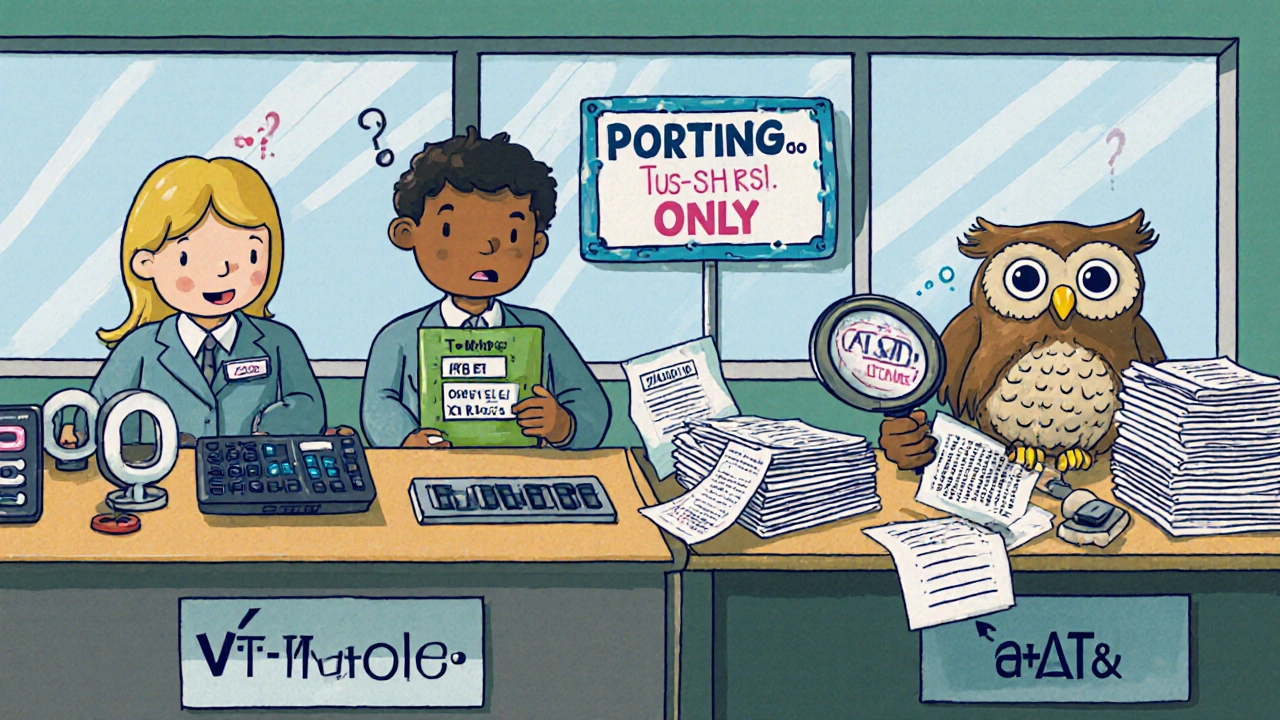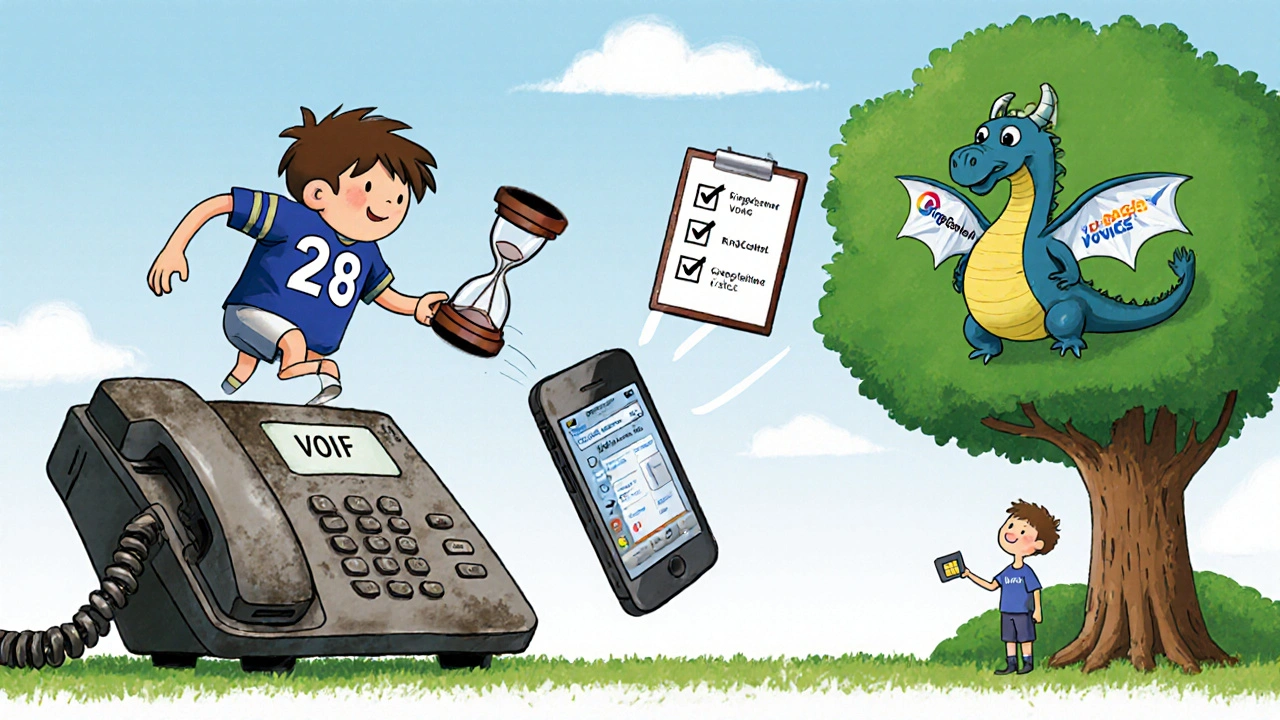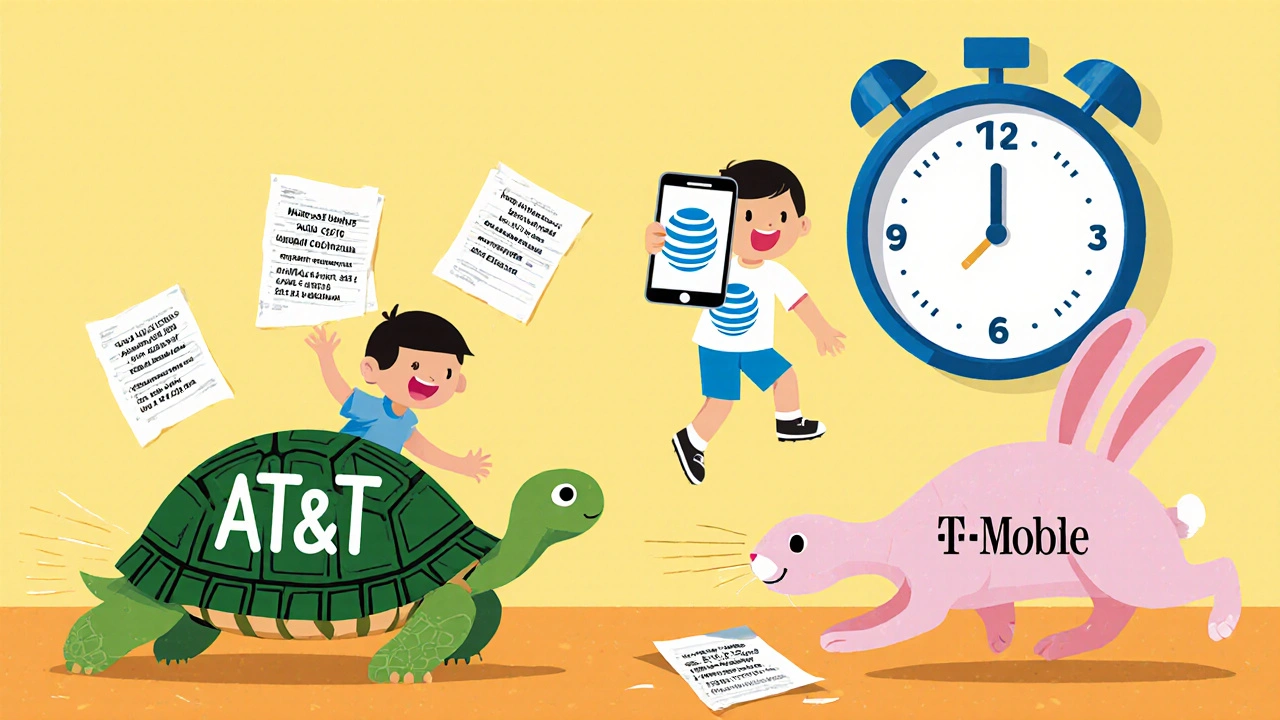Switching phone carriers sounds simple-until your number won’t move. You’ve picked a better plan, saved money, or found better coverage. But when it’s time to port your number, things stall. Some people get their number in under an hour. Others wait days. Why? It’s not just about the carrier. It’s about paperwork, timing, and how the system really works behind the scenes.
What Porting Actually Means
Porting your phone number means moving it from one provider to another without changing the digits. The FCC made this possible in 1996 to give consumers real choice. Before that, if you switched carriers, you lost your number. Now, you can keep it-no matter if you’re going from Verizon to T-Mobile, or from a landline to a VoIP service like RingCentral.But here’s the catch: the FCC says wireless ports should take no more than 2.5 hours for postpaid customers and 24 hours for prepaid. That’s the rule. But the rule doesn’t always match reality.
Real-World Porting Times by Carrier
If you’re switching between major U.S. wireless carriers, here’s what most people actually experience, based on thousands of user reports and carrier data from 2024:- T-Mobile: 10 minutes to 3 hours. Most users report completion within 2 hours. T-Mobile’s system is automated and fast-when everything’s correct.
- Verizon: 4 to 24 hours. Often done in under 8 hours. Verizon’s process is reliable, but delays happen if your account info doesn’t match exactly.
- AT&T: Minutes to 5 business days. This wide range isn’t a mistake. AT&T is the slowest when documentation is off. One mismatched ZIP code can add 3-5 days.
Landlines are a different story. They’re slower because they’re tied to older infrastructure. Verizon takes 2-10 business days. AT&T requires at least 5-7 days. T-Mobile doesn’t even offer landline service, so you’ll need a VoIP provider if you want to move a home number.
VoIP Porting: Why It Takes Longer
VoIP services like Google Voice, RingCentral, or OpenPhone aren’t traditional carriers. They’re classified as wireline providers under telecom rules. That means they follow different porting rules-and they’re slower.- Google Voice: Calls port in up to 48 hours. Texts? Up to 3 business days.
- RingCentral: 5-10 business days for mobile numbers. Landlines? 7-15 days.
- OpenPhone: 5-7 business days for U.S. numbers. Canadian numbers? 10-12 days.
Why? VoIP providers don’t use the same real-time system (NPAC) that wireless carriers do. Their ports go through a slower, manual verification layer. Even if you submit everything right, it still takes days because the system wasn’t built for speed.
The #1 Reason Porting Fails
It’s not the carrier. It’s not the technology. It’s your paperwork.According to Astound’s analysis of 10,000 porting attempts, 52% of delays happen because of mismatched account details. That means:
- Your name on the bill doesn’t match your ID.
- Your billing address has a typo.
- Your ZIP code is wrong by one digit.
- You’re using a PO Box when the carrier requires a physical address.
OpenPhone found that 68% of delays come from incomplete or inconsistent documents. That’s not a small number. It’s the norm.
Before you start, get these two things:
- Your most recent phone bill-PDF or printed-with your full name, account number, and billing address.
- Your account PIN or password. Some carriers call it a PAC (Porting Authorization Code). You can usually find it in your online account or by calling customer service.
Double-check every letter. If your bill says “Robert J. Smith” but your ID says “Bob Smith,” the system will reject it. No exceptions.

When to Submit Your Request
Timing matters more than you think.Telnyx analyzed 50,000 porting requests in 2023 and found a clear pattern: submitting between Tuesday and Thursday gets you faster results. Friday submissions? They often sit until Monday. Weekend requests? They’re ignored until Tuesday.
Why? Carriers process porting requests during business hours, Monday through Friday. If you submit on Friday at 5 p.m., you’re not getting processed until Tuesday morning. That adds 2-3 days right away.
Best practice: Submit your porting request on a Tuesday morning. That gives you the full week to resolve any issues before the weekend.
What Happens During the Switch
You might think your phone will just stop working one day. But here’s what actually happens:- Before the switch: Your old number still works. You can still receive calls and texts.
- During the switch: A brief interruption-usually 5 to 15 minutes for mobile numbers. For VoIP, it can be up to 2 hours.
- After the switch: Your number is active on the new carrier. Your old service shuts off automatically.
Consumer Reports found that 62% of users experienced some service disruption during the transition. About 28% lost service completely for 4-12 hours. That’s not rare. It’s expected.
Pro tip: Don’t wait until the last minute to set up your new phone. Activate it the day before your port is scheduled. Test your new SIM card. Make sure your contacts and apps are synced. That way, when your number moves, you’re ready.
Why Some Carriers Are Faster Than Others
T-Mobile wins because they built their system for speed. Their porting process is almost fully automated. Verizon is close behind. AT&T? They still rely on legacy systems and manual checks.But it’s not just about technology. It’s about competition. T-Mobile and Verizon know that fast porting is a selling point. If you can switch easily, more people will leave AT&T. So they invest in automation.
AT&T, as the oldest carrier, has less pressure to change. They still have millions of legacy customers on old billing systems. That’s why their porting times are so unpredictable.

What’s Changing in 2025
The FCC is pushing for faster ports. In March 2024, they proposed new rules to cut wireless porting time to 1 hour for postpaid and 4 hours for prepaid. That change is expected to roll out in Q2 2025.Carriers are already testing faster tools. Telnyx’s FastPort service, launched in January 2024, cuts standard porting times from 5-7 days down to 1-4 business days. Gartner predicts that by 2026, 75% of major carriers will use AI to verify documents automatically. That could reduce documentation errors by 25%.
But VoIP-to-mobile ports? They won’t get faster anytime soon. The rules are different. The systems are different. That gap isn’t closing.
What to Do If Your Port Is Stuck
If your port is taking longer than expected:- Call your new carrier’s porting support. Ask for a case ID and a timeline.
- Log into your old carrier’s account. Check if they’ve approved the port. Sometimes they don’t notify you.
- Look for an email from your old provider. They might have sent a rejection notice with a reason.
- If it’s been more than 5 business days, file a complaint with the FCC. They track carrier compliance.
Don’t wait. Every day you wait, your old service might still charge you. Some carriers keep billing until the port is fully complete-even if your number is already active on the new network.
Final Checklist Before You Port
Use this before you hit submit:- ✅ Get your latest bill with full account details.
- ✅ Confirm your account number, PIN, and billing address match your ID.
- ✅ Make sure your name is spelled exactly the same on all documents.
- ✅ Don’t pay your old bill the day before porting-wait until it’s done.
- ✅ Submit your request on a Tuesday or Wednesday.
- ✅ Have your new phone set up and ready with a working SIM.
- ✅ Keep your old phone active until you get a confirmation text from your new carrier.
Porting your number doesn’t have to be a nightmare. Most delays are preventable. Do the prep work right, and you’ll be done in hours-not days.
How long does it take to port a number from AT&T to T-Mobile?
Most people get their number ported from AT&T to T-Mobile in 1-3 business days. If your billing info matches exactly and you submit on a weekday, it can be done in under 24 hours. But if your address or name is off-even by one letter-it can take up to 5 days. T-Mobile’s system is fast. AT&T’s system is slow. The delay is almost always on AT&T’s end.
Can I port my number on a weekend?
You can submit a porting request on a weekend, but it won’t be processed until Monday. Carriers don’t handle porting requests on weekends. If you submit on Friday night, your request sits until Tuesday morning. To avoid delays, submit between Tuesday and Thursday.
Why is my port taking longer than the carrier promised?
Carriers often advertise ideal timelines-like “port in under 2 hours.” But those times assume perfect conditions: correct documents, no system errors, and no fraud checks. Real-world delays happen because of mismatched names, ZIP codes, or incomplete PINs. The FCC’s rules are maximums, not guarantees. If your info is off, the system flags it-and that adds days.
Do I need to cancel my old service after porting?
No. Your old service shuts off automatically once your number is successfully ported. Don’t cancel it yourself-doing so might break the porting process. Wait for confirmation from your new carrier that your number is active. Only then should you consider canceling your old account.
Can I port a VoIP number to a mobile carrier?
Yes, but it takes longer. Porting from Google Voice, RingCentral, or OpenPhone to a mobile carrier like Verizon or T-Mobile takes 5-10 business days. VoIP numbers are treated like landlines under FCC rules, so they go through a slower, manual verification process. Mobile-to-mobile ports are much faster because they use automated systems.
What happens if my port fails?
If your port fails, you’ll get an email or text from your old carrier explaining why. Common reasons: mismatched name, wrong ZIP code, or missing PIN. Fix the error, resubmit, and you’ll usually be approved within 1-2 business days. Don’t try again with the same info-double-check everything first.
Will I lose service during the port?
Yes, briefly. Most mobile ports cause a 5-15 minute interruption during the final switch. VoIP ports can take up to 2 hours. Your phone might show “No Service” or “Emergency Calls Only” during that time. This is normal. Don’t panic. Once the port completes, your number will work on your new carrier.
